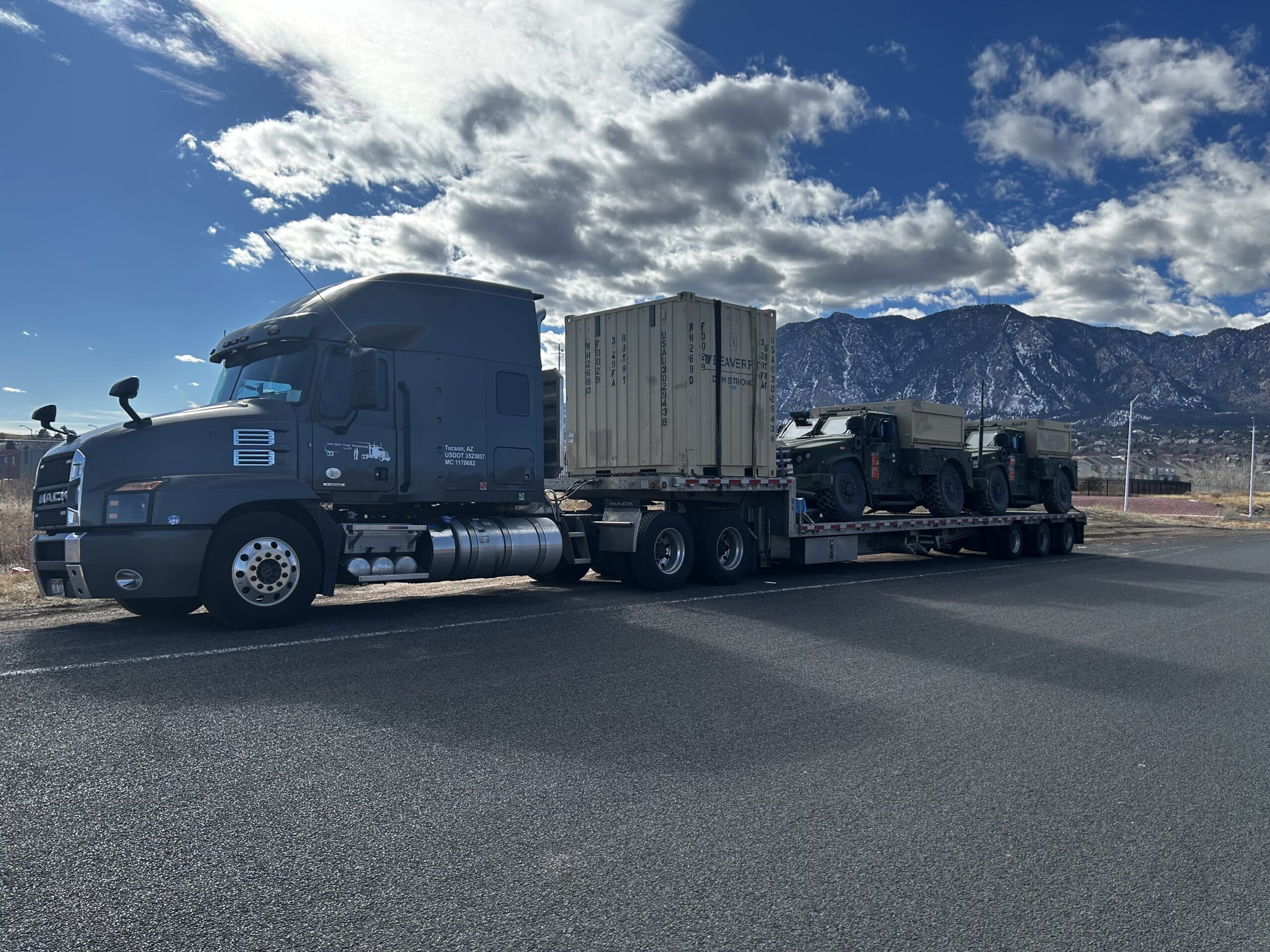There’s no single villain in the driver shortage story. Yes, freight cycles tighten and loosen. Yes, pay has risen. Yes, technology has upgraded trucks, routes, and back offices. But the fundamentals haven’t budged: the work is demanding; time at home is scarce on long-haul; the average driver is getting older; and carriers are competing for the same finite pool of qualified CDL holders. In 2025, most fleets don’t have a “hiring problem”—they have a conversion and retention problem. The winners are rebuilding the driver experience from the ground up: practical schedules, respectful dispatch, transparent pay, and a brand that treats drivers like pros rather than seat numbers.

The Persistent Driver Gap
The U.S. economy still leans on long-haul trucking for the bulk of over-the-road (OTR) freight. That dependency hasn’t changed even as rail intermodal expands and as new distribution models push inventory closer to customers. What has changed is the labor reality behind the wheel. Industry groups peg the shortage at well over 80,000 drivers in 2025—not because there aren’t applicants, but because too few make it through onboarding, probation, and the first six months. Those early months decide whether the driver becomes a long-term asset or another churn statistic.
Why the gap persists:
- Demand is resilient. Even with freight down year-over-year in some lanes, the base load of consumer and industrial goods keeps trucks moving. When demand rebounds, the staffing gap becomes painfully visible.
- Training throughput is limited. Schools can produce CDL holders, but not all graduates are ready for real-world OTR. Carriers must invest in finishing programs and mentorship to turn paper credentials into safe miles.
- First impressions matter. A confusing orientation, messy equipment, or unclear pay can send a new driver right back out the door. The gap widens every time a recruit ghosts after week two.
Raising CPM helps you attract more applicants—but it rarely improves retention unless it comes with predictable home time, fair dispatch, and clean equipment.
An Aging Workforce and the Retirement Wave
The average driver age continues to climb, and retirements are outpacing new entrants—especially in long-haul. As veterans leave, fleets lose capacity and the institutional expertise that anchors safety culture and mentoring.
- Training demand shifts: more finishing capacity, ride-along programs, and simulator time.
- Comfort matters: ergonomics, cabin climate, and ride quality extend safe careers.
- Health scheduling: proactive time for appointments beats “run till you’re done.”
Recruitment Challenges in a Lifestyle Business
Long-haul trucking is a lifestyle. Tradeoffs are front-loaded: long hours, nights away, and relentless attention to safety. Bonuses win attention, but clarity wins commitment.
What keeps younger talent on the fence?
- Home time: 48–72 hours away weekly is a dealbreaker for many.
- Unclear earnings: CPM vs. accessorials and dwell are confusing at first.
- Brand mismatch: outdated social presence or “bait-and-switch” reviews repel.
Carriers are shifting to predictable regional lanes, tuition help, and apprenticeships. The biggest win is driver-first dispatch: clear ETAs, realistic appointments, and grace for refusing truly bad loads.
“Don’t sell me a dream route. Sell me the truth—and then keep your word.”
What’s Different About 2025
- Regionalization is normal: shorter lanes, more competition for “good seats.”
- Data is practical: ELD/TMS insights de-stress weeks when used operationally.
- Brand trust: credibility travels driver-to-driver faster than any ad.
Automation Won’t Save You (Yet). People Will.
Full autonomy isn’t replacing OTR drivers at scale soon. What helps now: driver-assist systems, better routing, predictive maintenance, and respectful safety coaching.
- Dispatch UX: clean load plans, realistic dwell expectations.
- Maintenance loop: report → acknowledge → plan fix.
- Private coaching: feedback without public scorecard shaming.
The Real Cost of Turnover vs. Tenure
Turnover taxes recruiting budgets, insurance exposure, and management attention. Avoiding early churn (0–90 days) keeps equipment utilized and settlements calm.
Growing the Pool: Women, Veterans, and Second-Career Drivers
- Facilities & policies: Lighting, parking, and real harassment response.
- Mentorship: trusted pros for the first 90 days.
- Communication: respect + clarity; answer the phone.
From CDL Holder to Professional: Training That Sticks
Blueprint: a 12-week finishing arc
- Weeks 1–2: shadow runs, docks, real trip planning.
- Weeks 3–6: solo with radio shadow, daily debriefs.
- Weeks 7–12: night ops, mountains, weather protocols; weekly mentor calls.
Drivers aren’t a cost center; they’re your performance engine.
Scheduling, Lane Design, and the Physics of a Good Week
- Protect circadian rhythm.
- Engineer dwell out.
- Pre-stage near tight facilities.
Pay Clarity: Show the Math
Publish example settlements per lane type. Split CPM, detention, layover, accessorials. Add a realistic-week calculator in recruiting convos.
Owner-Operators & Lease-Ons: A Different Retention Game
- Curate loads (protect from chronic slow-pay).
- Admin clarity with one simple checklist.
- Respect equipment—don’t push misfit freight.
The Practical Playbook: 21 Moves That Work
- Tell the truth in ads.
- Call every applicant within 2 hours.
- Text onboarding steps.
- Ship a welcome kit.
- First truck, best truck.
- Fix one chronic shipper.
- Standardize ETAs.
- Coach privately.
- Weekend hotline.
- Clean settlement day.
- Upgrade sleep.
- Reward perfect weeks.
- Map home events.
- Build a mentor guild.
- Publish the lane book.
- Refusal grace.
- Driver council monthly.
- Keep promises small & kept.
- Invest in dispatch UX.
- Track first-90 attrition by desk.
- Celebrate tenure publicly.
How Smart Dispatch Turns Recruits into Teammates
- Plan with bad news. “Shipper’s late—here’s our relief plan.”
- Balance hard weeks. Follow with a favored lane or early home Friday.
- Share the why. Strategy earns trust.
Recruiting is marketing; retention is operations.
Metrics That Predict Retention
- First-90 attendance
- Dwell variance
- Dispatch response time
- Settlement accuracy
- Equipment uptime
Defusing the Hard Weeks (Before They Explode)
- Automatic dwell compensation past threshold.
- Hotels/rideshare ready on breakdowns.
- Non-punitive post-mortems.
Your Shippers Are Part of the Driver Experience
Use facility scorecards—turn time, bathroom access, parking, security—and celebrate the ones who do it right.
Brand Isn’t a Billboard—It’s a Behavior
- Answer phones quickly; use names.
- Own mistakes and make good fast.
- Show real drivers, not stock photos.
Ready to build a driver-first fleet?
Freight Girlz helps carriers design lanes, polish dispatch, and recruit honestly—so seats stay full and customers stay loyal.
Questions or want a custom retention plan? We’ll map your lanes and build a driver-first playbook you can deploy next week.

